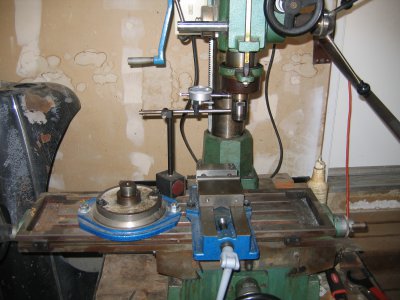- Joined
- Sep 17, 2020
- Messages
- 85
Does anyone have any experience with using optics for either tramming a tool or returning a round column tool to the proper position after moving the head?
I an rather new to the machining world, although I have been hanging around a shop for the last 40 years.
Tramming to me has always been a pain getting everything set up, the T-slots in the bed and all. While trying to come up with a way to return my head to the same position, I had a thought that an autocollimator would do this very well. (used them a lot in a previous incarnation.) I was unable to lactate one both small enough and within my budget. It did however strike me that it might be a perfect way to tram a mill/drill/lathe tailstock. Simply put the collimator down the spindle and an parallel front surface mirror on the bed/tailstock. and do the alignment. It should yield a perpendicularity within a few milli-arc seconds.
Is there anything wrong with this thought process?
Second part, Putting my head back in alignment. After some thought I determined that this would not really address my head issue as I would not be able to put the collimator back in the spindel for the realignment. So I came on the idea of project a crosshair onto the bed. I found that a rifle scope with crosshairs and a light source placed in the viewing end would project the crosshairs on to my bed. This allowed me to get it back in very well by simply picking a spot on my bed (scribe mark way off in a corner) zeroing my DRO, moving to my scribe mark, Moving the head for whatever I needed to do, Bring the head back so my crosshairs lined up, tighten the head. Return my bed to 0-0 and I'm aligned!!!
Now I have thought that for TRUE accuery I need to align the scope so the spindle axis to be co-planner so it will work at any Z, But I am after all using a .RF mill, can't REALLY expect THAT much accuery! My tests seem to work.
Am I missing anything?
Thanks guys.
b
I an rather new to the machining world, although I have been hanging around a shop for the last 40 years.
Tramming to me has always been a pain getting everything set up, the T-slots in the bed and all. While trying to come up with a way to return my head to the same position, I had a thought that an autocollimator would do this very well. (used them a lot in a previous incarnation.) I was unable to lactate one both small enough and within my budget. It did however strike me that it might be a perfect way to tram a mill/drill/lathe tailstock. Simply put the collimator down the spindle and an parallel front surface mirror on the bed/tailstock. and do the alignment. It should yield a perpendicularity within a few milli-arc seconds.
Is there anything wrong with this thought process?
Second part, Putting my head back in alignment. After some thought I determined that this would not really address my head issue as I would not be able to put the collimator back in the spindel for the realignment. So I came on the idea of project a crosshair onto the bed. I found that a rifle scope with crosshairs and a light source placed in the viewing end would project the crosshairs on to my bed. This allowed me to get it back in very well by simply picking a spot on my bed (scribe mark way off in a corner) zeroing my DRO, moving to my scribe mark, Moving the head for whatever I needed to do, Bring the head back so my crosshairs lined up, tighten the head. Return my bed to 0-0 and I'm aligned!!!
Now I have thought that for TRUE accuery I need to align the scope so the spindle axis to be co-planner so it will work at any Z, But I am after all using a .RF mill, can't REALLY expect THAT much accuery! My tests seem to work.
Am I missing anything?
Thanks guys.
b








